The green salad feels ubiquitous as a precursor to pasta in American dining—at home and at restaurants, particularly the Italian-American restaurants famous for their salad and breadsticks, like the Olive Garden. However, as travelers may remind you (often pedantically), the salad course is a finale, not the opening number when dining in Italy.
In On Food and Cooking: The Science and Lore of the Kitchen, Harold McGee notes that “recognizable salads go back to the Middle Ages,” and the Greeks and Romans ate lettuce earlier than that (249). I think McGee is spot on in his assessment of salad: “Leaves are the quintessential vegetable” (318). I too love a green salad, topped with fresh vegetables. I think I actually might love it more than almost any other dish (enough so that my daughter has used it several times on those inventory sheets about her mom’s favorites at preschool and in elementary school). Lest this sound like some sort of health virtue-signaling or internalized misogyny of women only feeling the right to claim “healthy” foods as their favorites, let me vigorously dissent. I also love steak, fried rice, curries, all Mexican food, rice, pasta, and piles of tortilla chips with dips. But I want all of these to include vegetables or be complemented by a green, leafy salad.
While I grew up eating iceberg lettuce, I don’t bother with it anymore. Nor do many other people since the last decade of the twentieth century. As Amanda Hesser observes in The Essential New York Times Cookbook: The Recipes of Record, salad reflected eaters’ psyches: “in the late 1990s, the microgreen was introduced, and we micromanaged our salads as much as we did our lives. Salad became serious, and expensive, a means to reconnect with the earth we had so long been ignoring. A plate of freshly dug beets and wild watercress was suddenly a dinner course, a sociopolitical statement about the environment, an exercise in discipline” (166).
Unknowingly, I followed this trend. I’m not sure I intended to make a political statement about salad, though I’m very happy to make many other political statements. I remember rejecting iceberg lettuce after experiencing the joy of flavorful leaves like arugula, spring greens, butter lettuce, and spinach on salads at restaurants. I was hooked, and while Luke will sometime complain that he misses the crunch of iceberg lettuce in a salad, I remind him that he can find this watery, tasteless item on burgers and sandwiches at many restaurants.
The lettuce of my youth was ubiquitous in rural American homes because of its easy-to-tolerate taste; indeed, Betty Crocker’s The Big Red Cookbook notes that it is iceberg’s “bland, mild flavor that makes it the most popular salad green” (410). Though watery, flavorless, and pale, iceberg also often found its way onto the plates of rural Americans because it kept well; Betty Crocker indicates that iceberg will keep for up to two weeks if properly washed and refrigerated (409). This is a useful quality in a green when your grocery store is fifteen to thirty miles away and is open limited hours. Or if you have few options for transportation. Or children napping. Or three feet of snow on the ground, blocking the gravel road until the road maintainer manages to get to your township.
There are no green salads in the “Soups, Salads & Vegetables” section of The Joy of Sharing, but there are many salads that Midwesterners recognize as staples on potluck or covered-dish dinners. Few of these include simply dressed vegetables, the types of vegetable salads I crave. But I’ve discovered a few, like “Aunt Ellen’s Carrots” (https://blog.cord.edu/karlaknutson/2023/06/27/aunt-ellens-carrots/). And to balance a hearty plate of “Sharon’s French Bread” and lasagna, I decided that making an entire Movie Night meal from the Oak Valley cookbook required one of the simpler, vegetable-forward salads, rather than a gelatin mold or a mayo-based confection. I settled on “Simply Dilly Cukes” by Geraldine Florence.
We liked it so much that I’ve made it several times since.
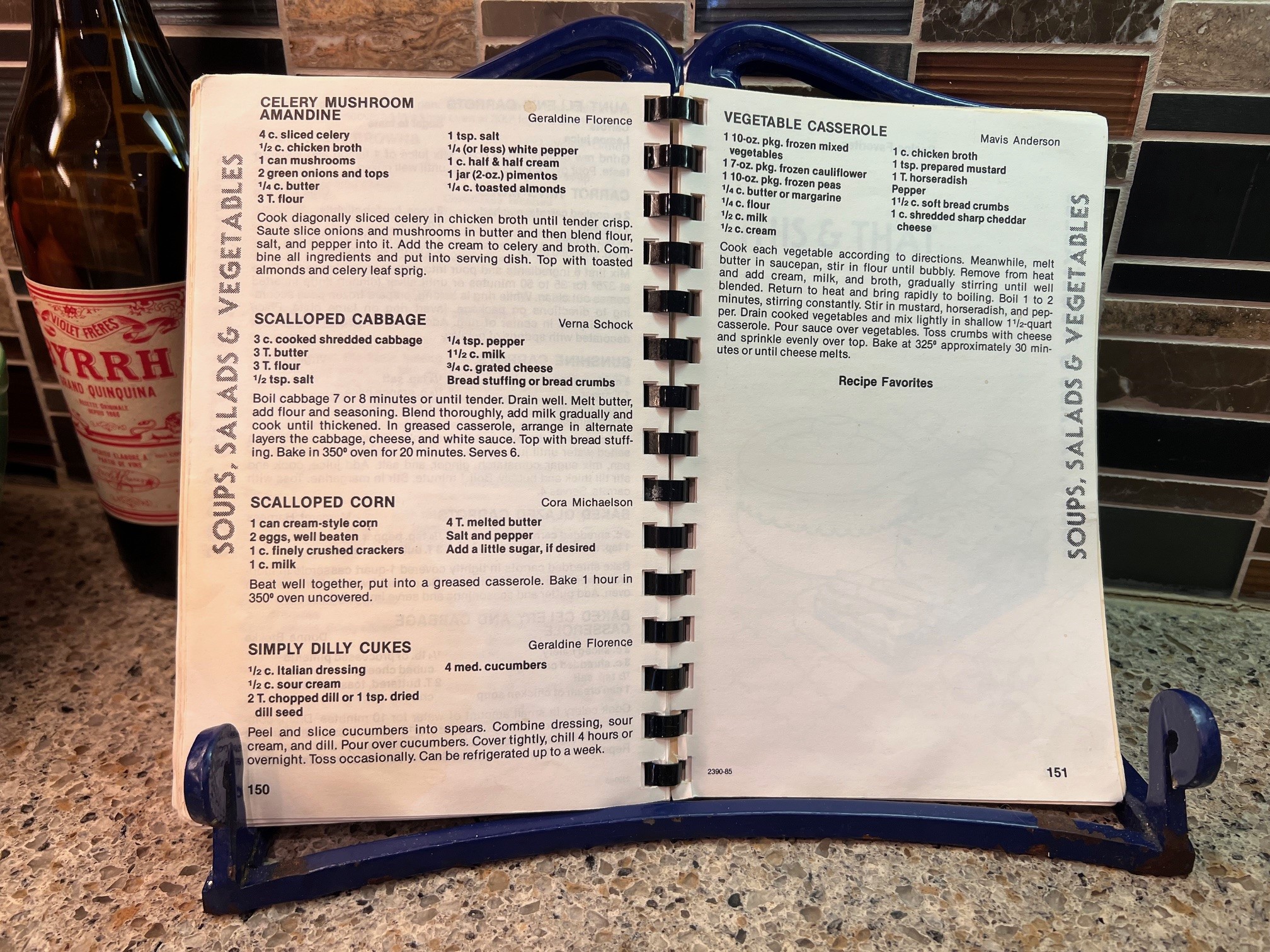
Simple!
Other than the half cup of Italian dressing, this salad is composed of whole ingredients—half a cup of sour cream, two tablespoons of fresh dill or one teaspoon of dried dill, and four cucumbers—medium in size.
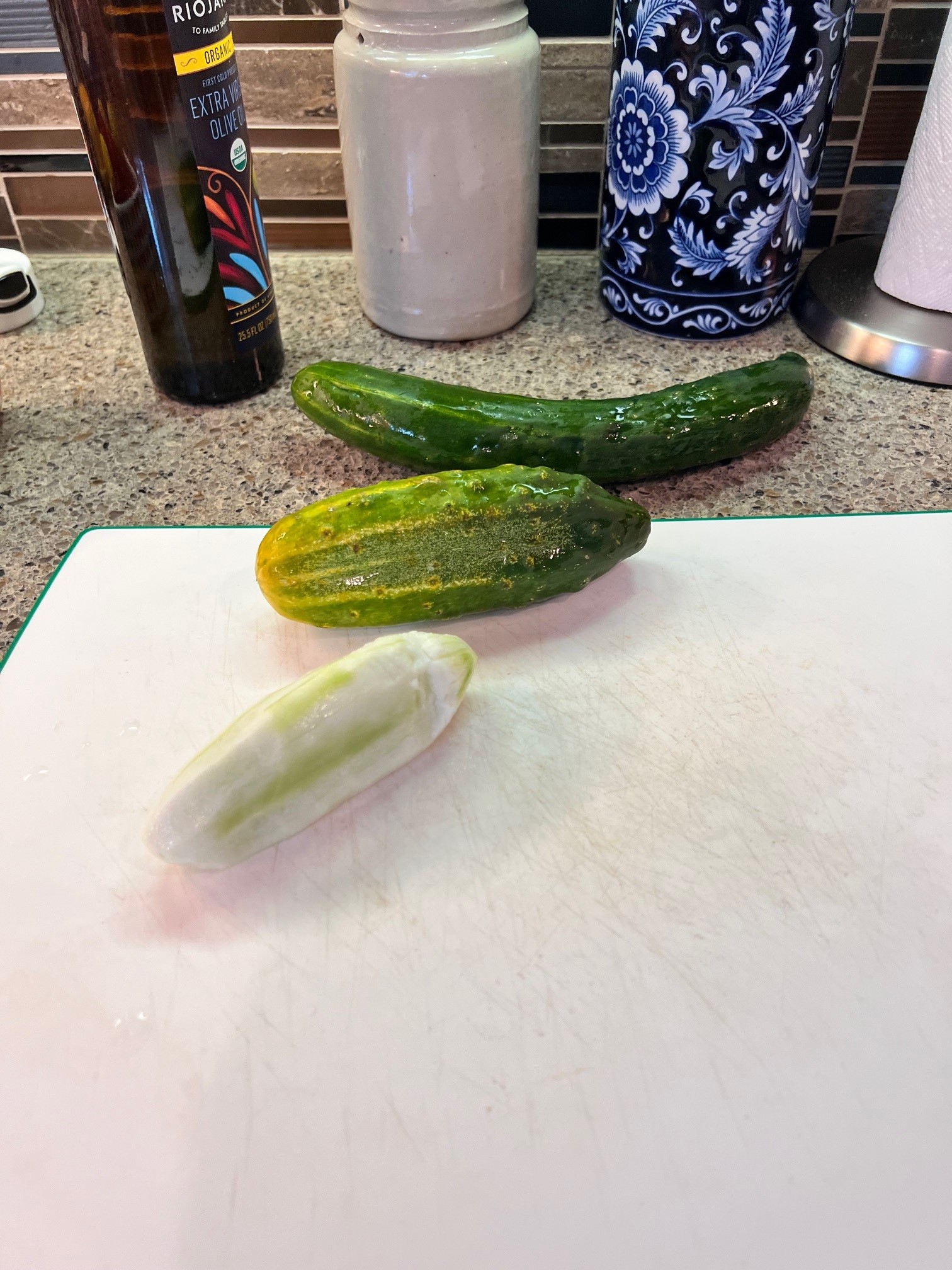
The instructions were easy to follow, which made it easy to put this salad together. It was fun too—I appreciated the suggestion to cut the cucumbers into spears, rather than the typical circles or half-moon shapes, as it made the salad visually interesting—unique and pretty. It’s also fun to shave off the fronds of fresh dill.
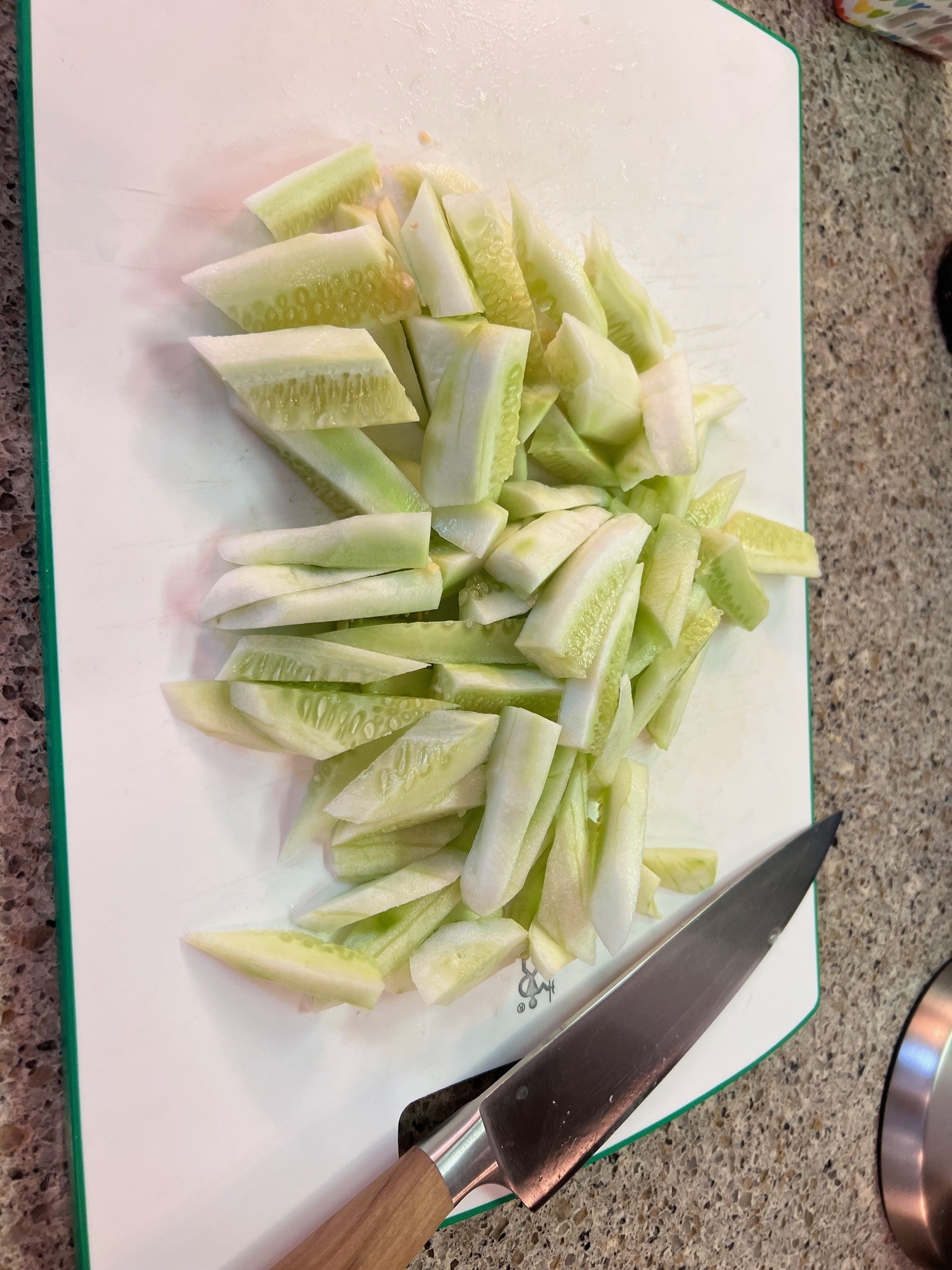
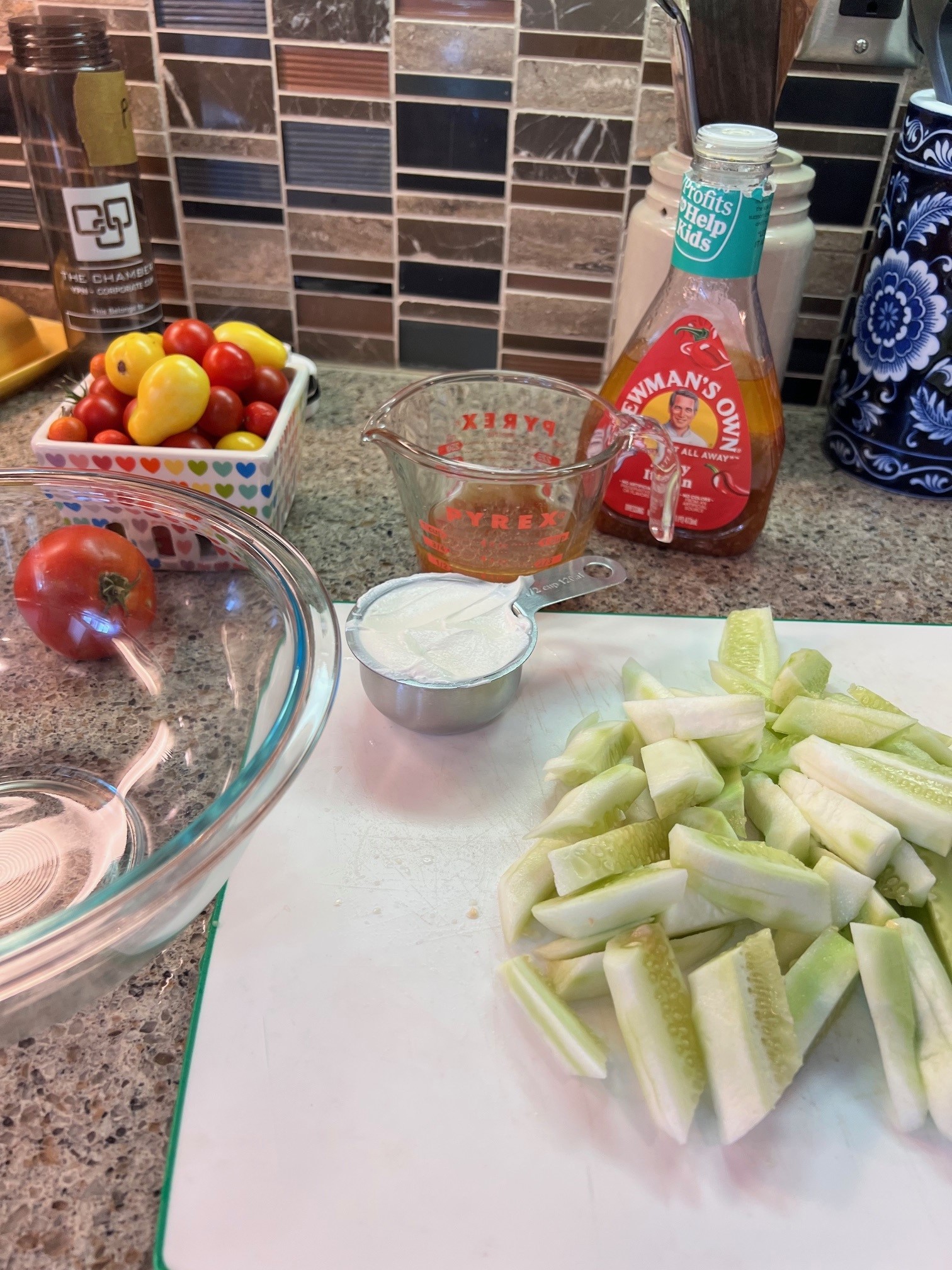
When I first tackled this recipe, the only change I made to the process was to leave the sliced cucumber on the cutting board and instead whisk the dressing mixture of sour cream, Italian dressing, and fresh dill together in the bowl prior to adding the cucumbers.
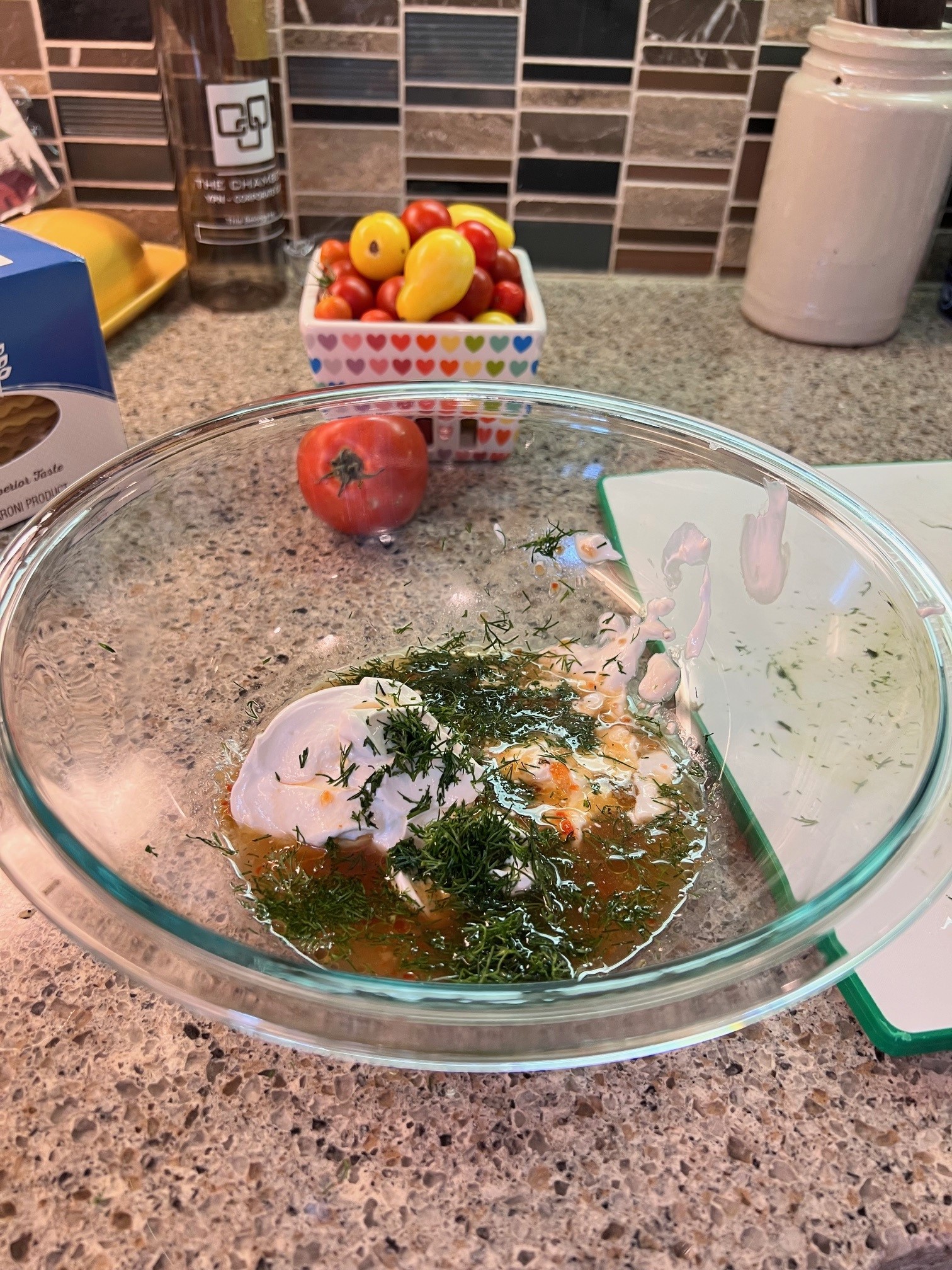
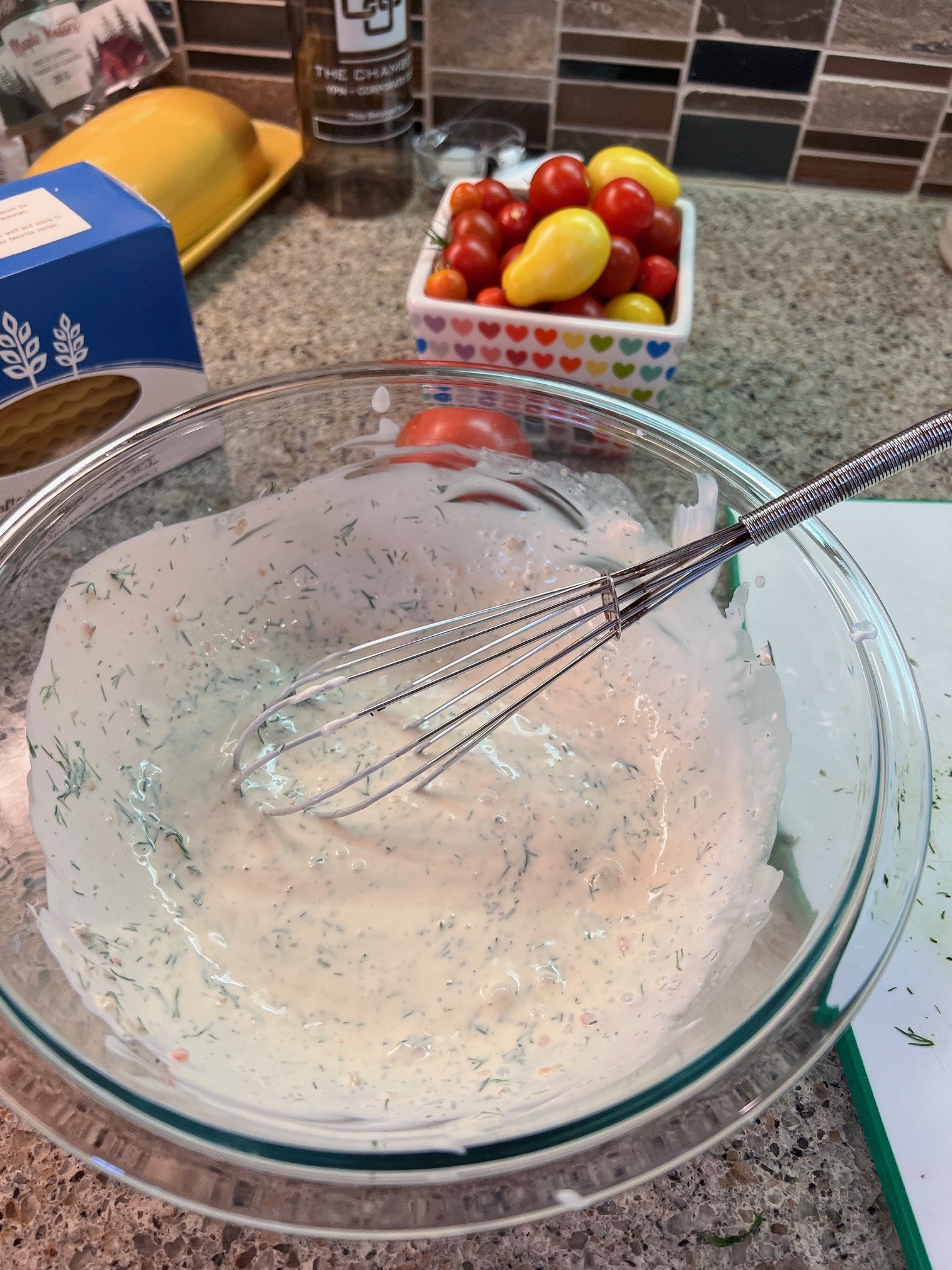
But since I had to toss the cucumbers into the dressing to be coated (and after sealing the lid of my Pyrex bowl, I shook it for good measure), I can see the utility in the original instructions, as the pouring would douse the resting cucumbers, coating them well. I let this rest in the fridge until Movie Night dinner, well over the prescribed four hours.
It was a hit! As I’m not a fan of creamy-cucumber salads—having been raised on sliced cucumbers covered in white vinegar—I was suspicious that this salad would be too heavy. But it was refreshing and light, undoubtedly because the dressing thinned the sour cream, coating but not caking the cucumbers. The cucumbers remained firm and added a nice crunch to complement the gooey texture of the lasagna and the chewy, buttery crumb of the garlic bread. Their light green color also enlivened the plate, otherwise filled with red and golds. All of us enjoyed the flavor, and during the next week, I served it with green salads, using a spoonful of “Simply Dilly Cukes” on the top of the greens to deliver both cucumbers and dressing.
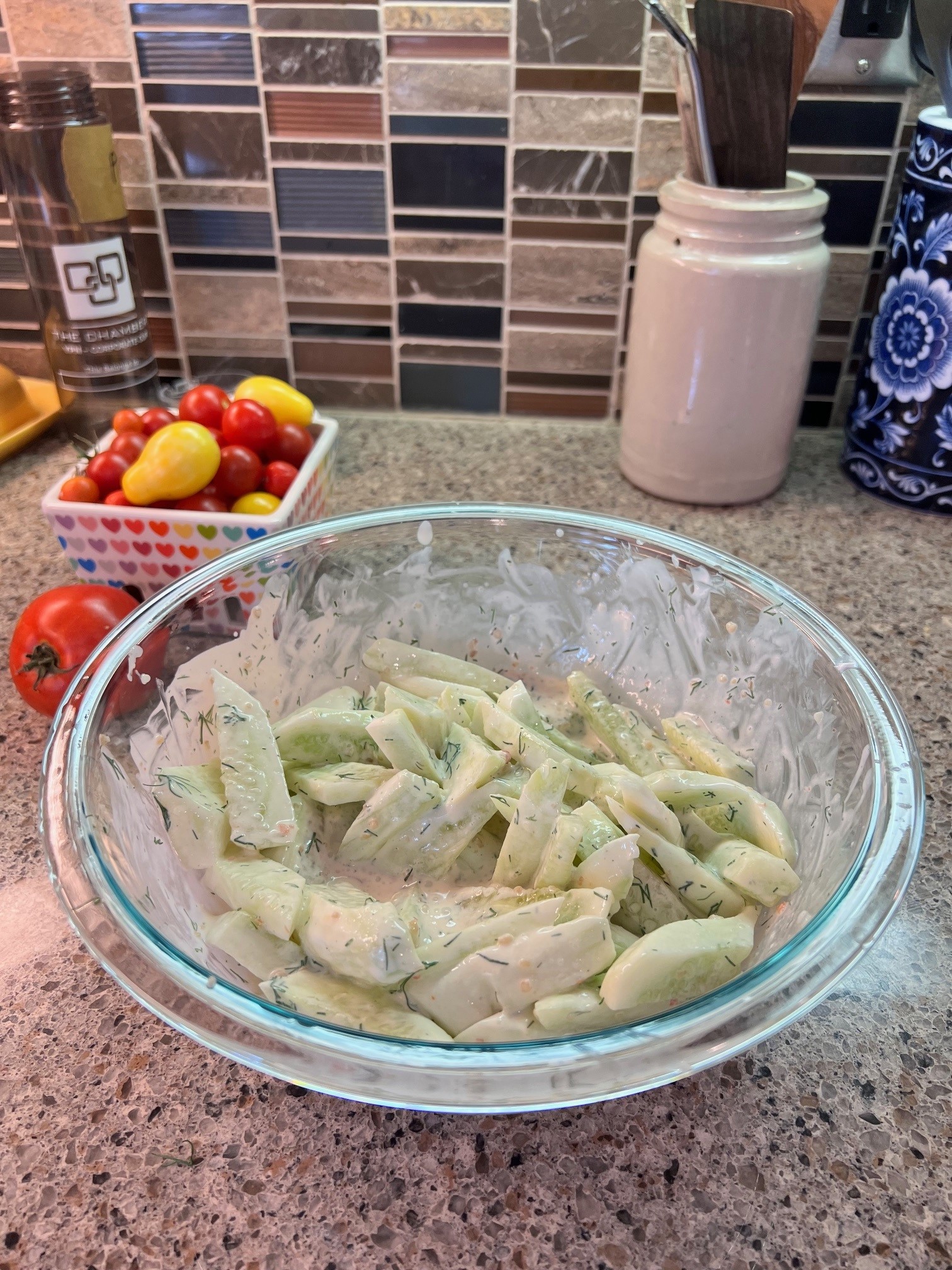
So I made it again a month later to bring to a camping adventure with some family friends, as a side for our pizza dinner. To speed the process, I cut the cucumbers into half-moons and used dried dill.
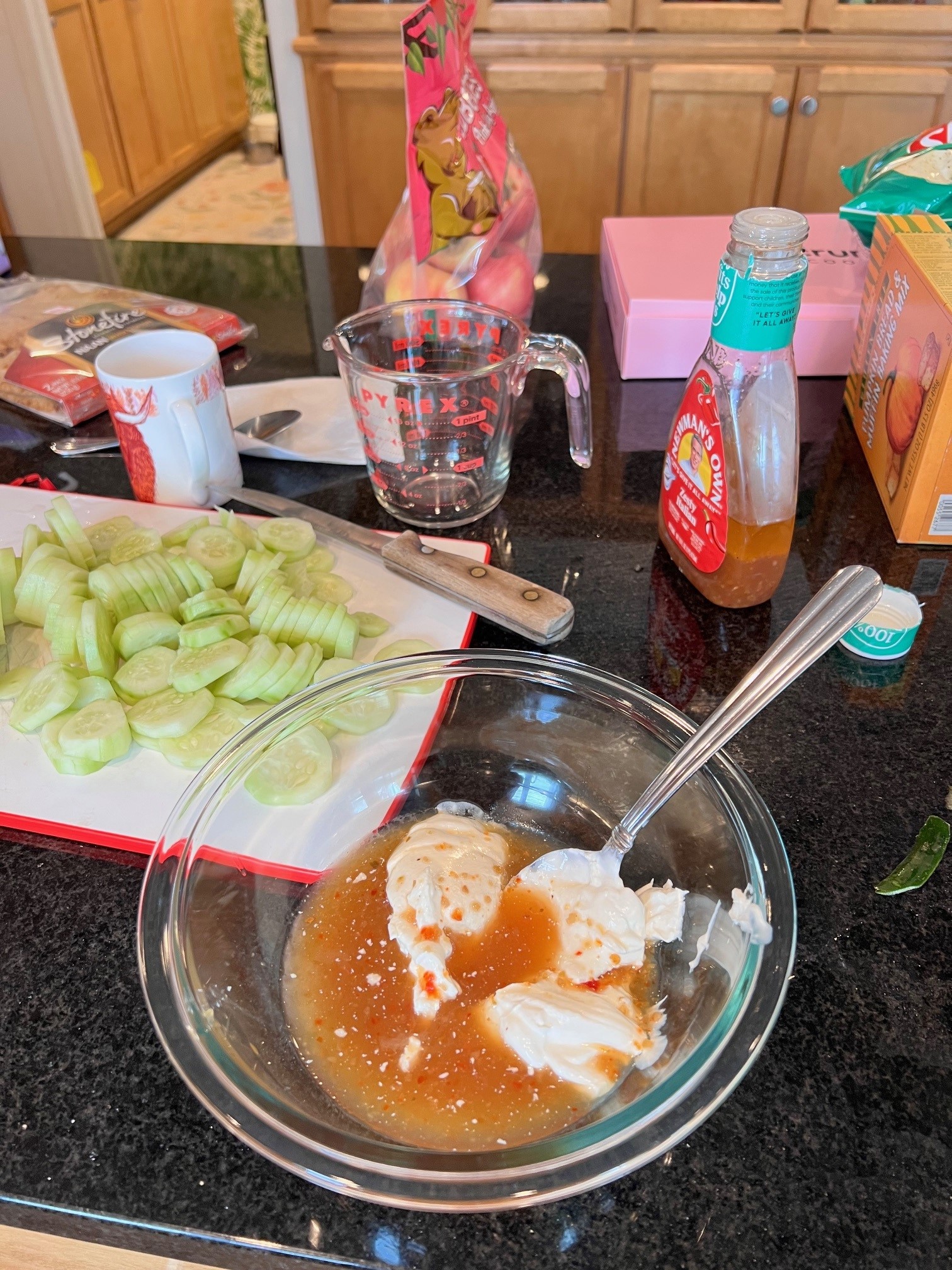
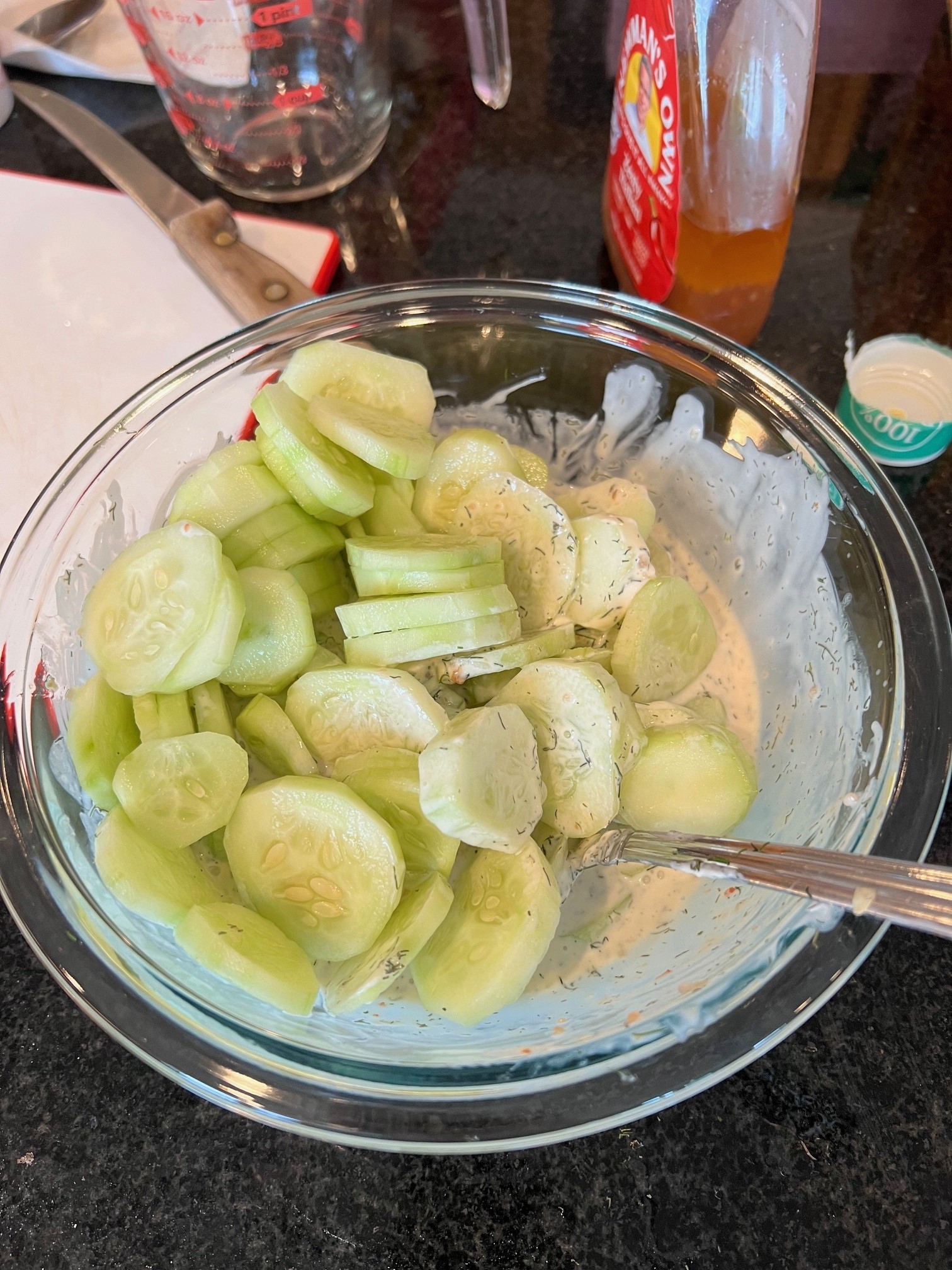
It kept well in our camping fridge, and it was a favorite with the kids.
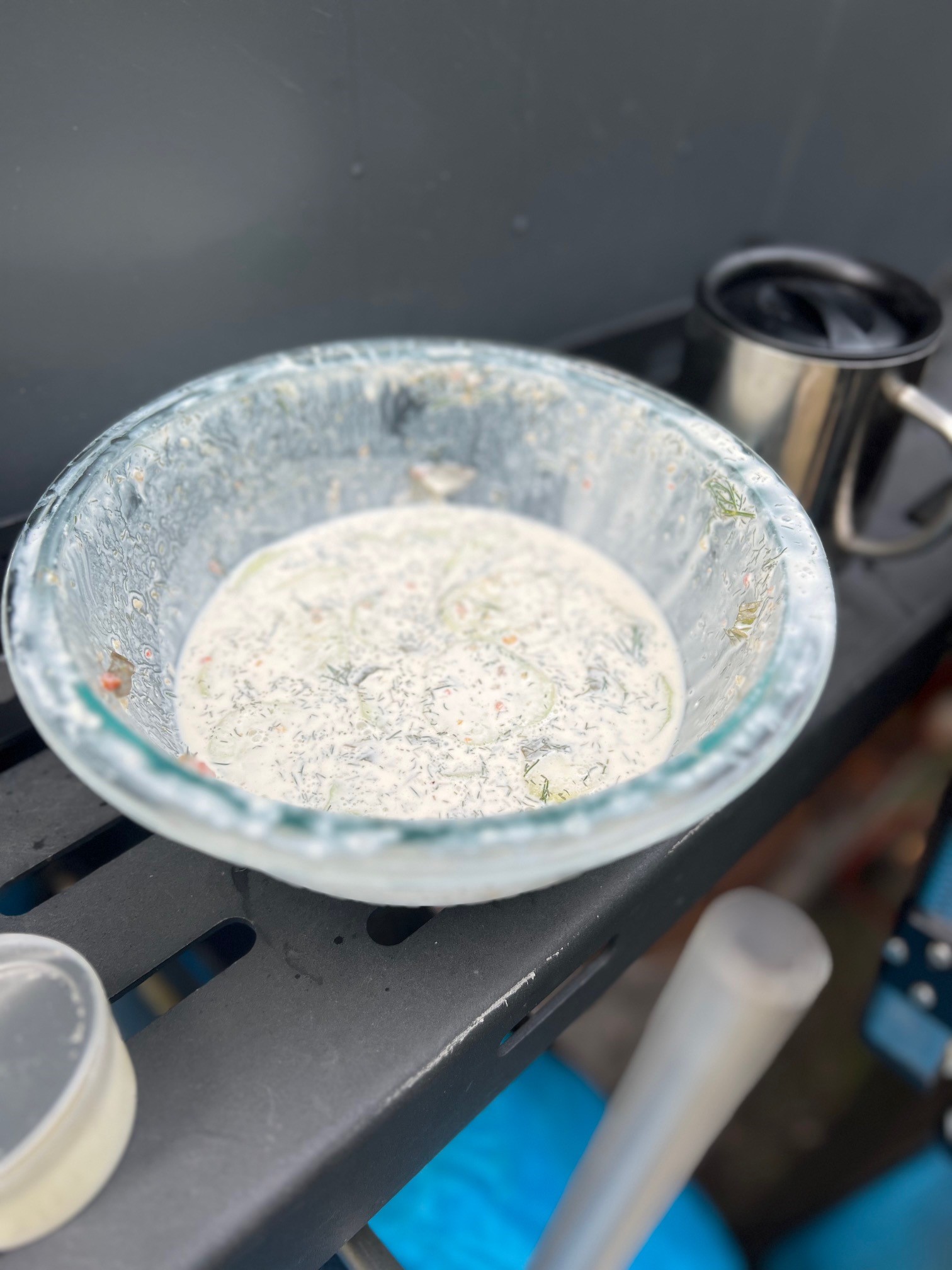
The next month I made it again with little change and then again this spring but added some leftover basil and lemon. The lemon made it too sour, I thought, and the basil didn’t add anything, which was disappointing; I must have needed more. Given how many salad recipes suggest using lemon as the acid, this is surprising. I suspect I used too much—about half a lemon.
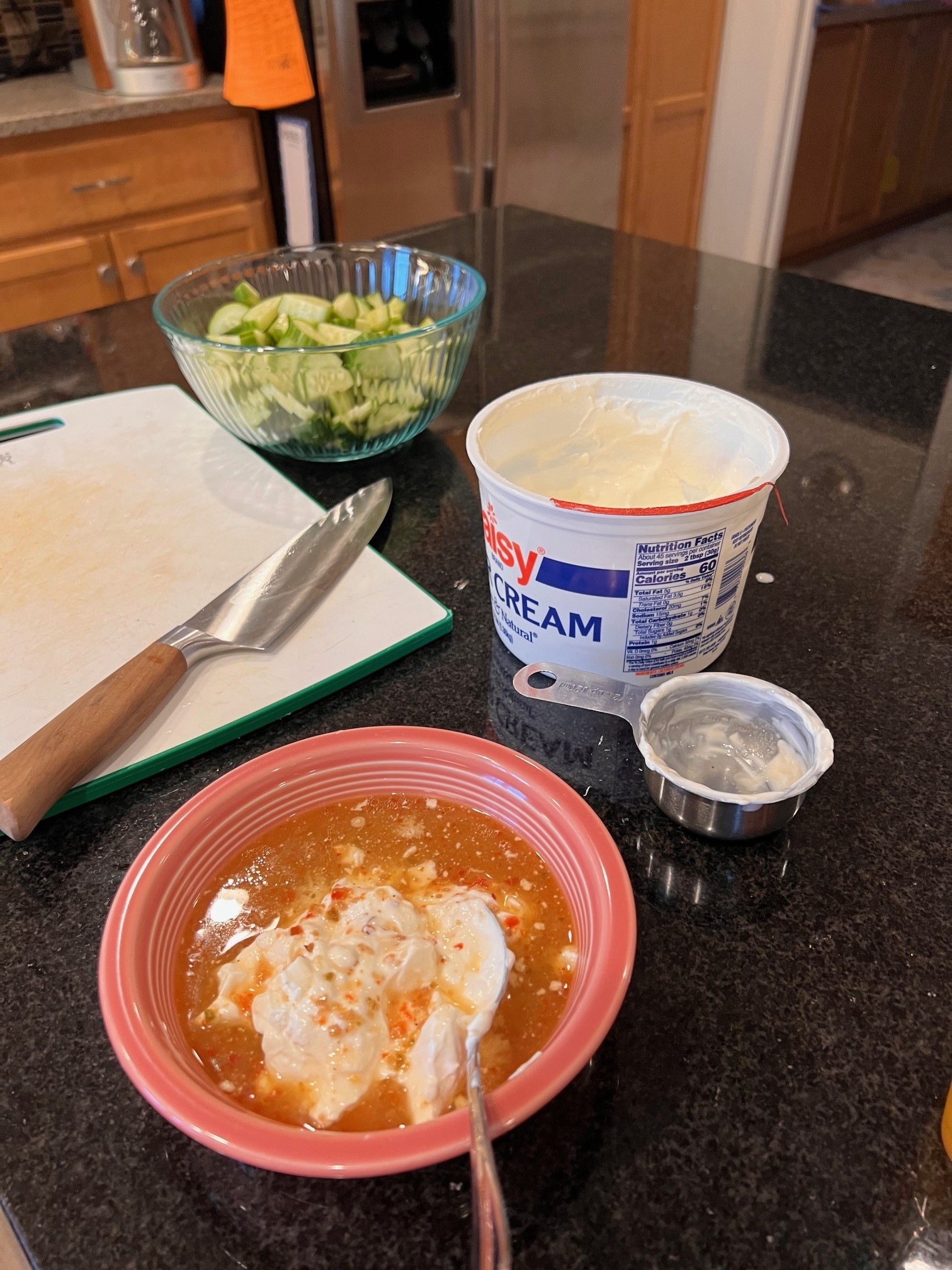
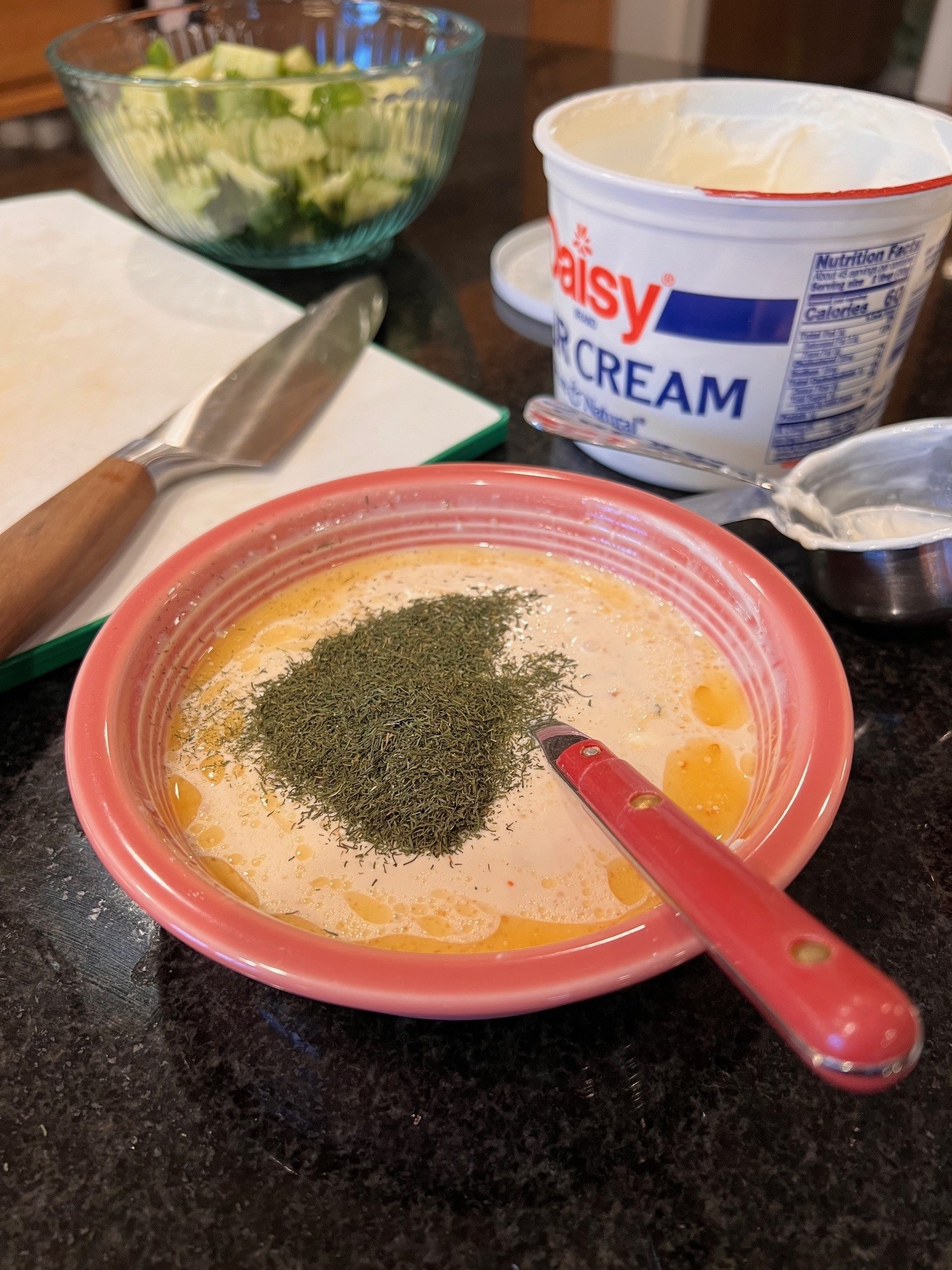
Reflections
“Simply Dilly Cukes” is a lovely salad in every way—aesthetically, palatably, and methodologically. It’s swift, efficient, durable, and uses readily accessed ingredients that are often pantry and fridge staples. At the end of a summer, it’s an easy way to use up your cucumber bounty.
It’s clearly a riff on the two types of cucumber salads—creamy and vinegar. These cookbook staples are presented together, often with one version as the default and the other in a note or paragraph below indicating how to create a variation. Either way, the common ingredients include cucumbers, dill, vinegar, sour cream and occasionally onions.
Salads, as I noted earlier, comprise a wide variety of dishes—and these dishes serve a wide variety of purposes too. Ranging from ham salad—chopped up ham combined with mayonnaise, celery and onion, and served on bread or a bun (the latter is common when served at funerals—the infamous “Dead Spread”) to gelatin-based concoctions to whipped cream and marshmallow dressings for fruit, to starches laden with Miracle whip—your potatoes and macaroni salads—at its most fundamental, “salad” means ingredients bound by a dressing. As I move into making a variety of salads, I am eager to share more about the history of the genre, including how American women were blamed for corrupting it and the history of the Midwest’s love for jello.
Contributor: Geraldine Florence
Geraldine Florence was born in 1930 to Mildred and Ingolf Heggerston of Sacred Heart Minnesota. She graduated from the University of Minnesota in 1951 and in September of that year married Gerald (Jerry) Florence, born in 1927, in Edinburgh, North Dakota, son of Oscar and Evelyn Florence. Later Gerald graduated from Minot High school and from the University of Minnesota School of Dentistry in 1952, before returning to Minot to practice briefly. He became the dentist at the Velva Medical Center in 1954, and the family moved to Velva. Gerald and Geraldine had five children, including two Concordia College graduates. Geraldine served as one of the clinic’s dental hygienists from 1983 to 1990, and in addition to their shared work, the couple was active in the Velva community in the Jaycees, Lions, the park board, the women’s club, and organizations at Oak Valley. Gerald passed in 2018; Geraldine in 2020.
Geraldine’s other contributions to The Joy of Sharing include “Almond Bark Chews,” “My Favorite Egg Dish” (sounds promising!), “Baked Pork Chops,” “Banana Split Cake,” “Helen’s Cauliflower Soup,” and “Celery Mushroom Amandine.” I made the latter for Christmas Eve dinner and will report on it soon.
This post is part of an ongoing series in which I make and reflect on recipes and the people who contributed them to the 1985 Oak Valley Lutheran Church compiled cookbook, The Joy of Sharing.

